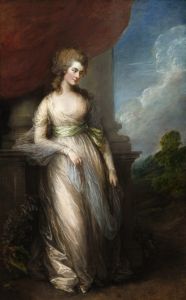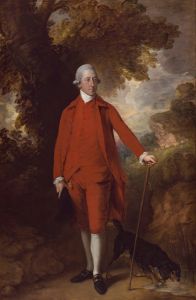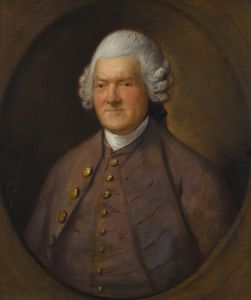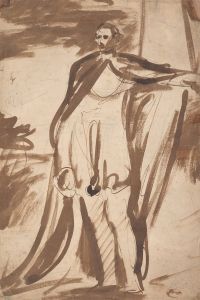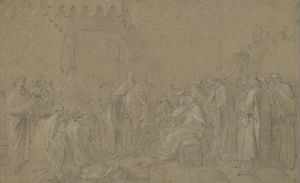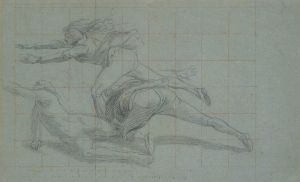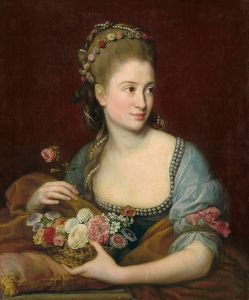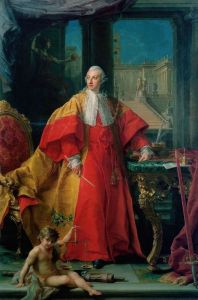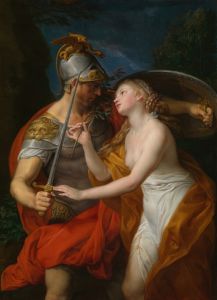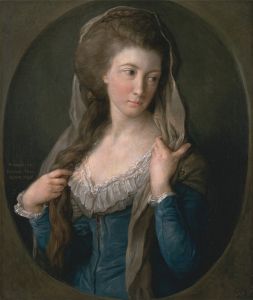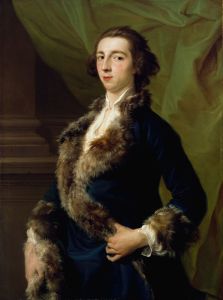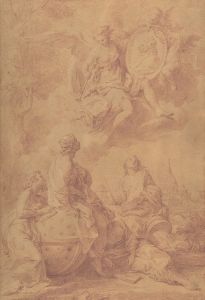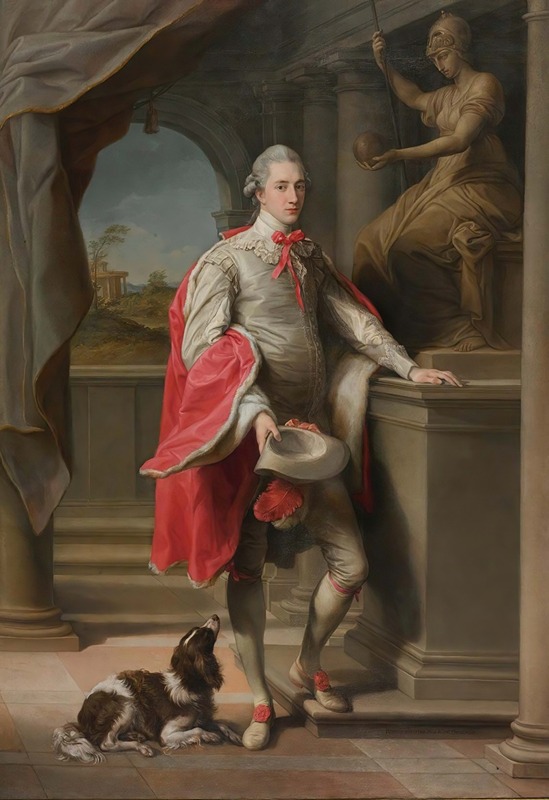
Portrait Of John, 3rd Baron Monson Of Burton
A hand-painted replica of Pompeo Batoni’s masterpiece Portrait Of John, 3rd Baron Monson Of Burton, meticulously crafted by professional artists to capture the true essence of the original. Each piece is created with museum-quality canvas and rare mineral pigments, carefully painted by experienced artists with delicate brushstrokes and rich, layered colors to perfectly recreate the texture of the original artwork. Unlike machine-printed reproductions, this hand-painted version brings the painting to life, infused with the artist’s emotions and skill in every stroke. Whether for personal collection or home decoration, it instantly elevates the artistic atmosphere of any space.
The painting Portrait of John, 3rd Baron Monson of Burton is a work by the renowned Italian artist Pompeo Batoni, completed in 1764. Batoni, celebrated for his portraits of European aristocracy and his mastery of the Grand Manner style, created this artwork during a period when he was highly sought after by British patrons undertaking the Grand Tour. The portrait exemplifies Batoni's ability to combine refined realism with elements of classical grandeur, a hallmark of his artistic approach.
John Monson, the 3rd Baron Monson of Burton (1727–1774), was a British peer and politician. He inherited the title of Baron Monson in 1748 following the death of his father, John Monson, 2nd Baron Monson. As a member of the British aristocracy, Monson participated in the Grand Tour, a traditional journey through Europe undertaken by young men of noble or wealthy families to complete their education and cultural refinement. It was during this tour that Monson commissioned Batoni to paint his portrait.
In the painting, John Monson is depicted in a dignified pose, dressed in elegant attire that reflects his status and wealth. Batoni's skillful use of light and color enhances the texture of the fabrics and the sitter's complexion, lending the portrait a lifelike quality. The background of the painting includes classical architectural elements, a common feature in Batoni's portraits, which served to associate the sitter with the ideals of antiquity and intellectual sophistication.
The portrait is considered an excellent example of Batoni's work during the height of his career. Batoni was known for his ability to capture not only the physical likeness of his subjects but also their social standing and personality. His portraits often included symbolic elements that conveyed the sitter's virtues, achievements, or interests, though specific details about such elements in this particular painting are not widely documented.
The painting is currently housed in the collection of the National Gallery of Ireland, where it remains an important example of 18th-century portraiture and a testament to the cultural exchange between Britain and Italy during the Grand Tour era. It continues to be appreciated for its artistic merit and historical significance.





